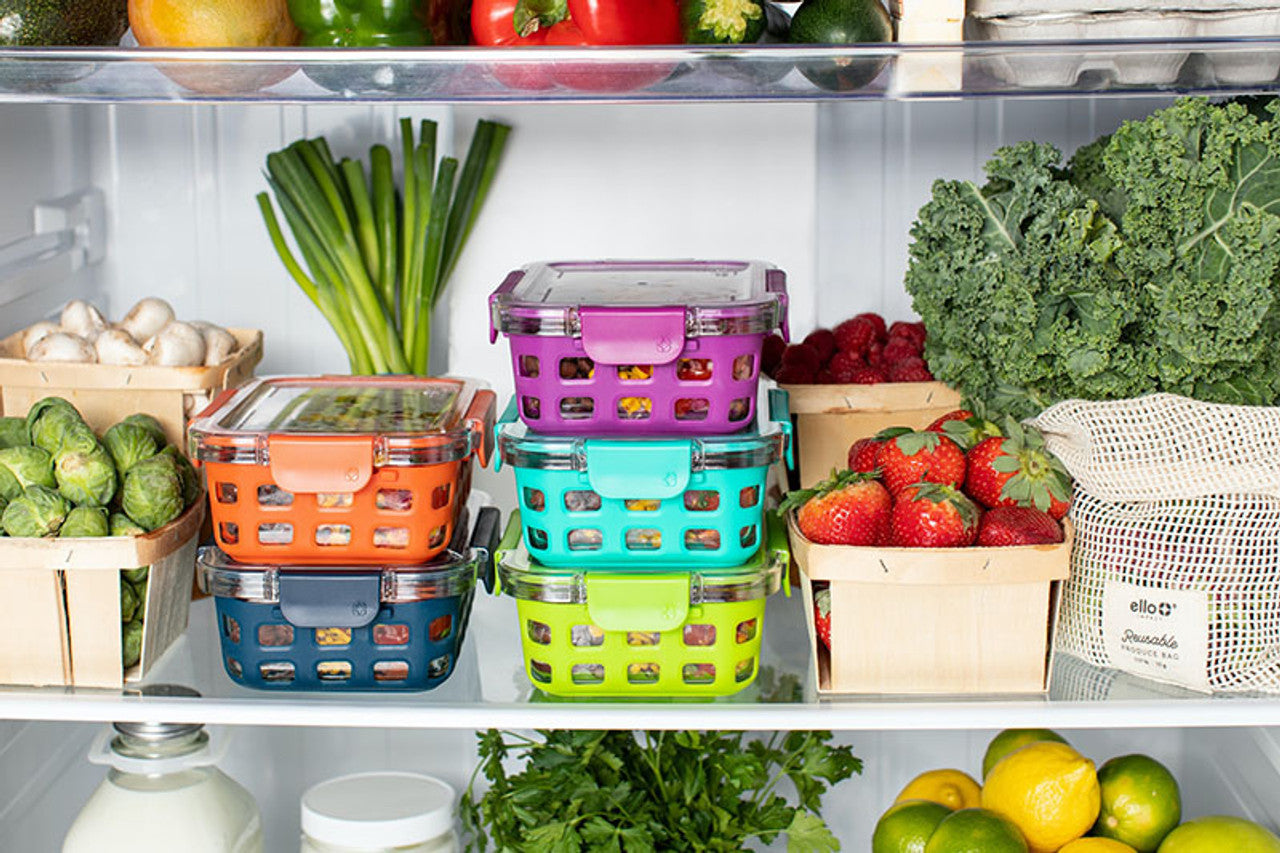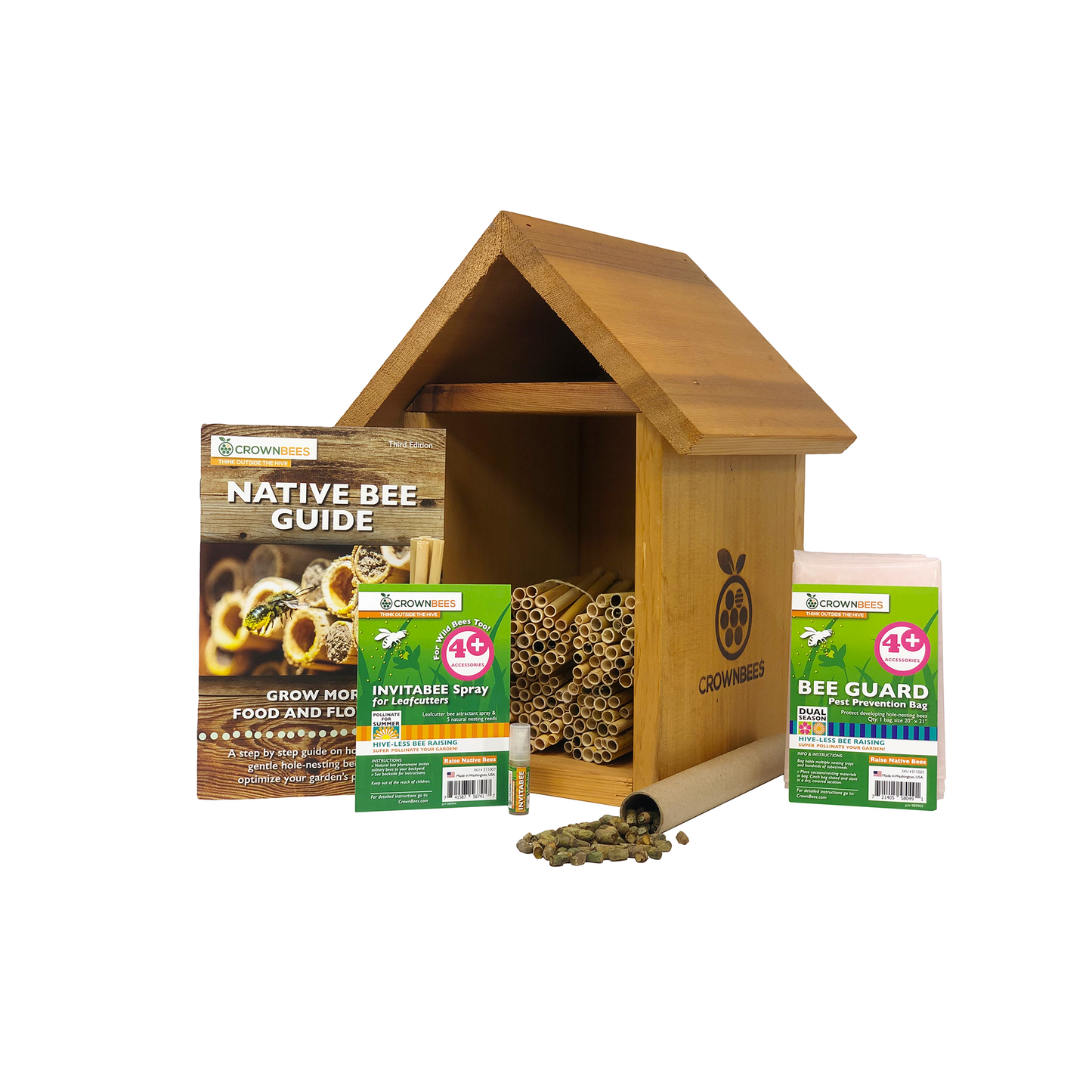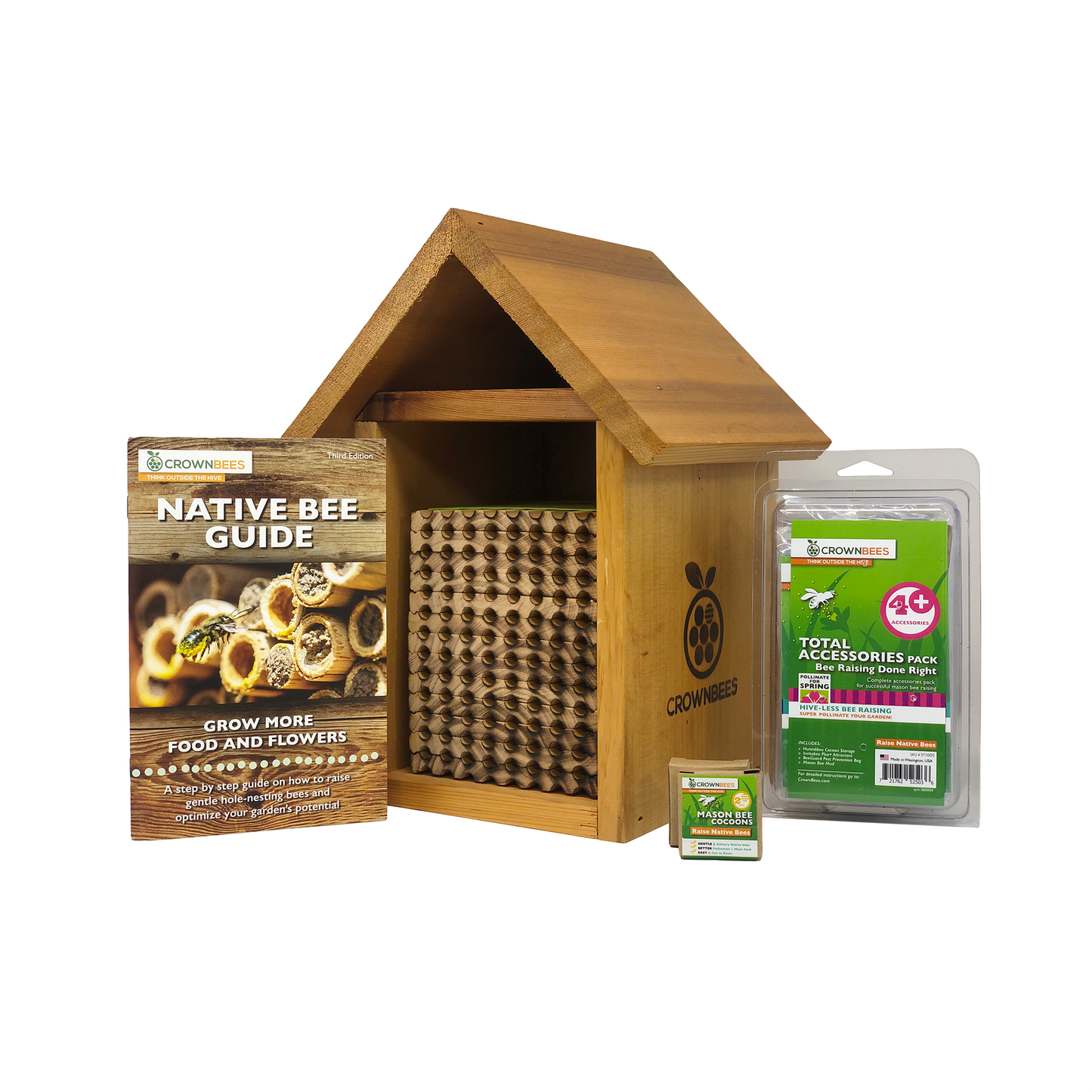
"Sustainable living aims to reduce personal and societal environmental impact by making positive changes that counteract climate change and other negative environmental concerns."
Why live a more sustainable lifestyle?
We know bees and other pollinators play a critical role in food production and support healthy ecosystems needed for clean air, soil stability, and biodiversity. We also know that bees are dying across the globe from various interrelated factors - mono-cropping, heavy pesticide use, drought, habitat loss, invasive species, and climate change.
Most of us claim to love the planet, but do we? It's easy to say we love nature when we are enamored watching young bees emerge from capped cells or quietly bouncing from flower to flower, gathering pollen. It's much more challenging when the object of our affection asks for something in return - such as being more mindful of the consequences of our consumption. We're all guilty of allowing our habits and convenience to drive our behaviors, causing us to ignore dire environmental warnings, continue to over-consume, and emit CO2 like there's no tomorrow.
You'd be correct to say that individual action alone is unlikely to make the global changes necessary to slow climate change, habitat loss, and harmful agricultural practices. We need business and industry leaders to change their behaviors, and we need local, national, and global policies to guide sustainability initiatives. But, don't underestimate the impact of transitioning to a more sustainable lifestyle! We keep businesses open with our purchases and influence policies with our votes and voices. Our everyday choices affect the environment. From what we eat to how we clean our houses, there's a lot we can do to minimize our impact on our planet.
A note on the list: I think it's safe to say that we've all heard of the 3 R's: Reduce, Reuse, and Recycle. Yes, the 3 R's were a great environmental awareness campaign of the '70s, but like many things from the '70s, like metal playgrounds, it needs some updating.
This list utilizes the updated 7 R's, which include: Rethink, Refuse, Reduce, Re-choose, Repair, Reuse, and Recycle. Recycling, while a good idea, is broken in the U.S. Most of us dutifully place our items into the correct bins, yet only 9% of plastics are recycled. Therefore, recycling, while still significant, is the least impactful of the Rs.
You may already be doing a few of these things, or perhaps all of them, which is fantastic! But, if not, I challenge you to adopt a few (or all) of these simple ways to live a more sustainable lifestyle.
Bonus: You'll also save quite a bit of money by adopting many of these practices!

1. Before you buy, ask yourself if you really need it.
Everything we purchase has an impact on the environment. The number of resources used to make even the most straightforward products is far greater than most people think. Take a moment to think about all the resources used to create a standard #2 pencil. Zinc, copper, rubber, sulfur, iron, wood, graphite, clay - and these are just the materials of the pencil itself. Add in the resources used to mine, manufacture, package, distribute, market, and dispose of that pencil, and you'll start to see how something as simple as a pencil can have a large environmental impact.
So, the next time you go shopping, ask yourself, do you need to go shopping? If so, do you need to buy new clothes, gadgets, and gear? Can you reduce the resources used by borrowing from a friend or neighbor, renting items, or purchasing secondhand?
Pro Tip: Check out The Story of Stuff to learn more about our production and consumption patterns. Even though it was released in 2007 (think iPod, not iPhone), it gives a fantastic overview of why we need to rethink how we shop and reduce what we buy.

2. Refuse single-use products.
An easy action we can take is to refuse single-use products. We need to fight back against the throwaway culture that has taken hold in this country and the world. All products, and especially plastics, metals, and textiles, should be designed with the intention that their raw materials will be recovered and reused or repurposed.
The hardest part of the single-use plastic battle is the magnitude of plastics we only use for a few minutes to eat, carry stuff, or package things. These items have an average life span of 15 minutes before being thrown 'away.' Only for plastics, there is no such thing as 'away.' Plastics can take 500 + years to degrade. Even then, they are not 'away'; they break down into microplastics which we end up ingesting through our food, water, and air. 50% of the plastic problem in the ocean is disposable plastic like plastic bags, water bottles, takeaway containers, cups, and straws. Single-use plastics are a relatively easy problem to combat. Proactively say NO.
I know this can be challenging. We feel bad telling the person helping us bag our groceries that we brought our own, or we forget to request no utensils with our to-go order or no straw with our drink. However, refusing single-use products is the only way to show those producing them that we'd rather have more sustainable options. There are so many unique, affordable reusable options for cutlery, straws, bags, and cups that we don't have any excuse for not refusing single-use products.
I highly recommend watching "The Plastic Problem," a PBS documentary (free to watch) highlighting plastic pollution and the threats facing humans and animals globally.
Pro Tip: Dedicate something you wear daily as a reminder. For example, I wear a bracelet made of recycled ocean plastic to help me remember to refuse single-use plastics. You'll be surprised how well it works!

3. Choose to buy from socially and environmentally responsible companies.
One of our most significant powers as a consumer is the power of choice! From food to household products to clothes, the number of options out there can get overwhelming - but there are a couple of things we can do and look for to help us actively minimize our impact on the planet.
Look for certified products. Certifications are often the product of NGOs and businesses coming together to solve environmental and social problems. Buy organic whenever possible; it may cost a little more, but it keeps harmful pesticides out of our land and water, protecting our bees and families. When purchasing new clothing, fabrics, or home textiles, look for Global Organic Textile Standard (GOTS). Choose shade-grown coffee, which is grown while keeping forests intact for wildlife. Check out this blog for a more comprehensive list.
Be skeptical. Many of us want to make environmentally conscious purchases, and marketers know that sustainability sells - and enter greenwashing. Greenwashing by design "makes people believe that a company is doing more to protect the environment than it is." Claims like "eco-friendly," "natural," or "green" are so vague that they are essentially meaningless. They create an impression of environmentally friendly behavior without actually making any promises. So, if you see a product advertising a single environmental claim without indicating a broader commitment to sustainability, then you have probably spotted a case of greenwashing. The best way to find out if a company is truly sustainable is to do some RESEARCH (another R!) to learn more about their "eco-friendly" practices.
Boycott products that endanger forests and wildlife. To avoid contributing to the endangerment of nature, look for products made from sustainable forestry/fishing techniques that do not harm wildlife. The World Wildlife Fund and Humane Society International have published buying guides to help you make the best choices for nature. These are especially useful when traveling abroad to areas that may not have as strict environmental protections in place.

4. Buy products with less, better packaging.
Packaging accounts for nearly 1/3 of municipal solid waste in the United States. Introducing a few simple practices into your lifestyle can help reduce your packaging waste.
- Bring your own reusable bag, water bottle, coffee cup, straw, and utensils.
- Bring reusable produce bags and buy unpackaged products, such as fruits vegetables, instead of pre-packaged produce. Additionally, most grocery stores allow you to fill your own containers with granola, spices, and nuts.
- When comparing similar items, choose the one with less or more easily recyclable packaging. Less packaging is more important than the type of packaging because of the pitiful recycling rates in the U.S. If the packaging is similar in volume, look at the percentage of post-consumer recycled content. The higher, the better!
Reuse packaging products whenever possible. I bring my own containers to restaurants to avoid using single-use to-go items and often clean and store gently used aluminum foil to give it a second life.

5. Repair, Don't Replace!
Don't get me wrong. Sometimes our stuff needs to be replaced, especially if the repair costs more than the item is worth, or you have an outdated appliance that uses way more energy to operate than a newer model. But, a great way to make a difference is to repair items rather than purchasing new ones. Here are a few tips to help you get started:
- Not handy? Not a problem! The Internet has how-to tutorials on just about anything!
- Check to see if a small business will repair your item if you can't fix it yourself.
- Rent or borrow tools so you don't have to spend the money to purchase something you'll only use a handful of times.
- Many brands and outdoor stores will offer to repair your gear for a small fee. Check out Repair Lair, Rugged Thread, or Dave Page, Cobbler, to name a few.
Are you a great cook but lousy at repairs? Exchange services with friends or family!

6. Eat Less Meat.
Gasp, I know! I grew up in a meat and potatoes family, and my last trip to Austin, TX, instilled in me an appreciation for the art of smoking brisket. But, animal agriculture is one of the most environmentally destructive industries on the planet, the leading cause of climate change, and responsible for massive amounts of habitat destruction, water usage, greenhouse gas emissions, and pollution.
If we genuinely care about the health of our planet, then we can't ignore the evidence of the negative impacts animal agriculture has on the environment. I'm not suggesting that everyone become vegan or vegetarian, although that would be the most planet-friendly way to go; instead, I'm challenging you to eat fewer animal products.
I've found the easiest way to do this is to make a plan. There are a ton of excellent resources out there to help you reduce your food footprint. The New York Times has a fantastic article titled The Meat-Lover's Guide to Eating Less Meat that I found helpful in creating my plan!

7. Create Less Waste (Or Go Zero Waste)
The average American sends 4.9 lbs. of trash to the landfill EVERY DAY! That's a massive amount of waste which adds more stress on our already outdated and overflowing landfills. What's more is the U.S. represents 4% of the world's population but produces 12% of municipal solid waste, making us the most wasteful country in the world. And, the runner-up isn't even close.

You might wonder what's wrong with landfills? Don't they keep trash out of our oceans? Landfills are responsible for 15% of the methane emissions in the U.S., and toxins from cleaning products, batteries, small electronics (which shouldn't be in a landfill) leach into the soil and run off into our oceans and groundwater when it rains. One look at the Great Pacific Garbage Patch demonstrates that much of our waste is still entering our oceans.
The only solution is to reduce the amount of waste we generate. But, where do we start?
- Focus on eliminating single-use items first (a reoccurring theme of this blog).
- When you have to buy an item, check your local thrift stores or Apps like Offer Up or Freecycle, which allow people to buy or sell locally.
- When you see an item you like or want, ask yourself if you really need it. Please take an hour, or better yet, a day, to think about it.
- When buying everyday items, choose ones with little to no packaging—bar soap without packaging, zero waste toothpaste, etc.
- Choose washable napkins and kitchen towels over throwaway paper items.
- Invest in a bidet to cut back on the amount of toilet paper you use.
- Support local bulk food stores (bring containers from home), farmer's markets, community gardens, or plant a garden.
- Learn to appreciate what you have! Purchase products that are built to last.
Start composting. Rotting food stinks (and in my house, attracts fruit flies), and as soon as I started composting, I realized I no longer had to put the trash out as often. There are many other great benefits of composting, which you can learn more about from the U.S. Composing Council.

8. Be an advocate for change and vote.
As I stated earlier, we need business and industry leaders to change their behaviors, and we need local, national, and global policies to guide sustainability initiatives. Unfortunately, history has shown us that often businesses and governments will only act if they feel they'll lose money or votes. Here are a few simple ways you can let decision-makers know that we demand change:
- Let your purchases speak for you. Don't buy from companies that are harmful to the environment. Yes, it takes some time and effort to learn about the companies we purchase from, but there is no incentive for them to change their practices if we don't.
- Call or write people in government who represent you, local and state. Tell them your concerns.
- Make it a habit to say "No." No straw, no bag, no utensils, please. Do this as soon as you can. If you're ordering food online, type this message in the notes section. It saves the business money, saves the server time, and saves the planet's resources.
- Sign petitions and take pledges. There are so many great organizations speaking to politicians and industry leaders on behalf of the planet. Help them out by signing the petitions needed to prove that we, regular people, want more robust policies to fight climate change, reduce pesticides, and protect our natural resources. To get you started, click here to take the Plastic Pledge and here to sign a petition to ban the chemical that's killing our bees.
- Vote for and donate to leaders who prioritize the environment over corporate profit. Look for candidates who are proposing green initiatives.
Share your knowledge with friends and family! Often, it's not that people want to be wasteful or behave in ways that harm the planet; but that large corporations have downplayed the full consequences of these types of actions. Knowledge is power!

If you think this is all nice information, but will one person really make a difference? The answer is YES!
Every day you make decisions that impact the planet. What are you buying? How do you get your groceries? What are you eating? What companies are you buying from? Every purchase you make (or don't make) is a vote for the type of world you would like to live in and the type of world you would like your children and grandchildren to inherit.
Start with yourself and then inspire others. Start in your home, and then teach your community. Make sustainable living a habit, and you'll be helping to tackle one of the biggest global challenges of our time.
Together, we can do this!


